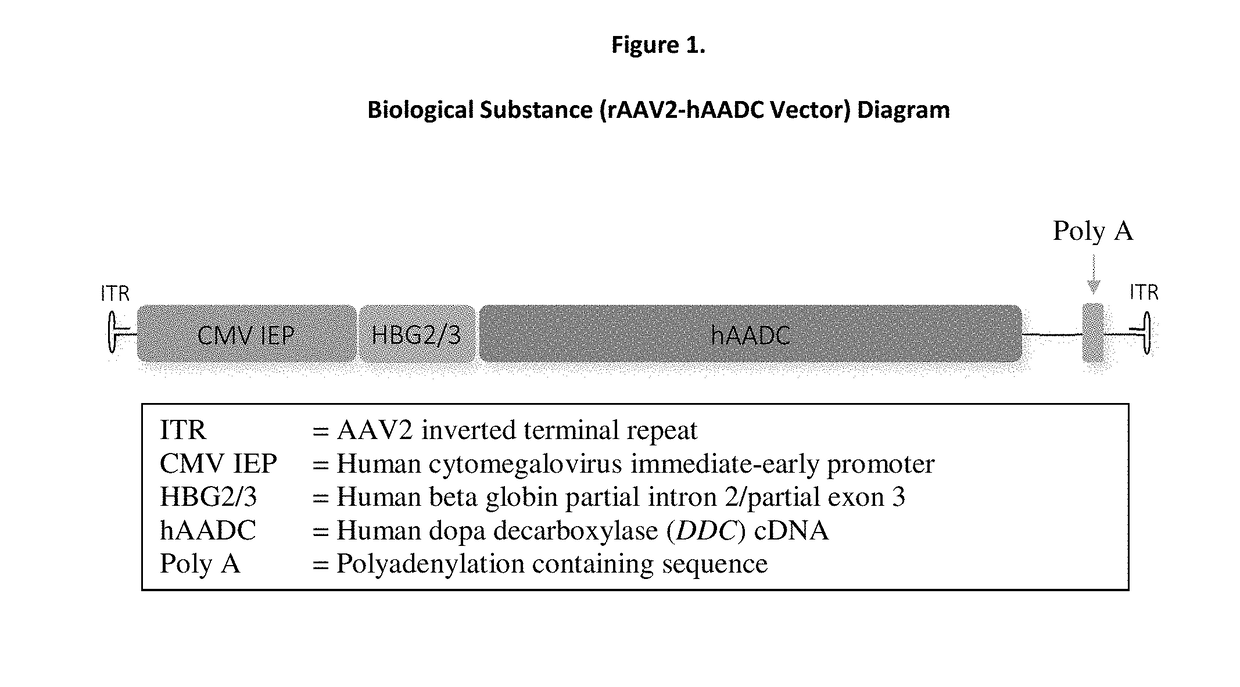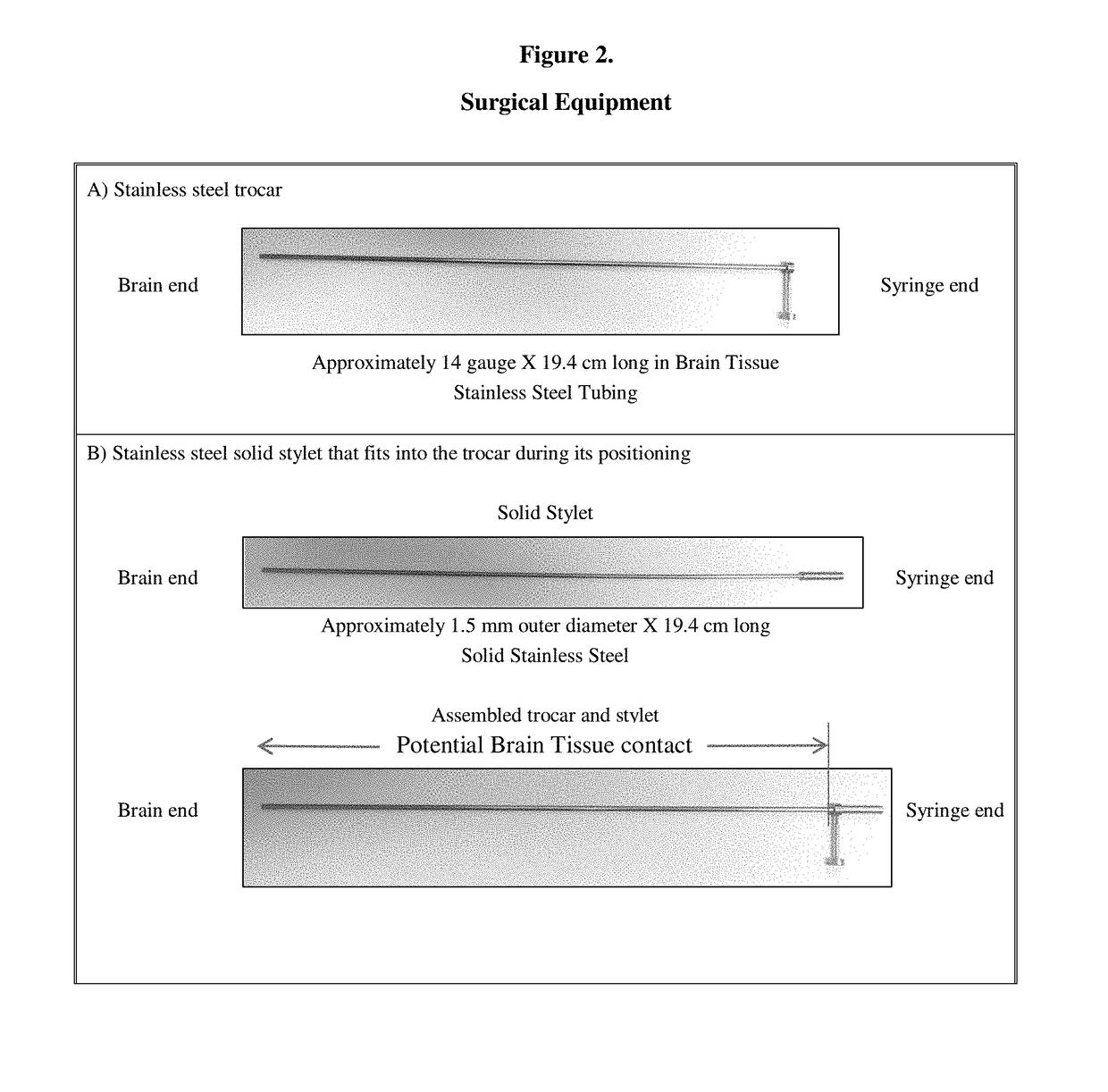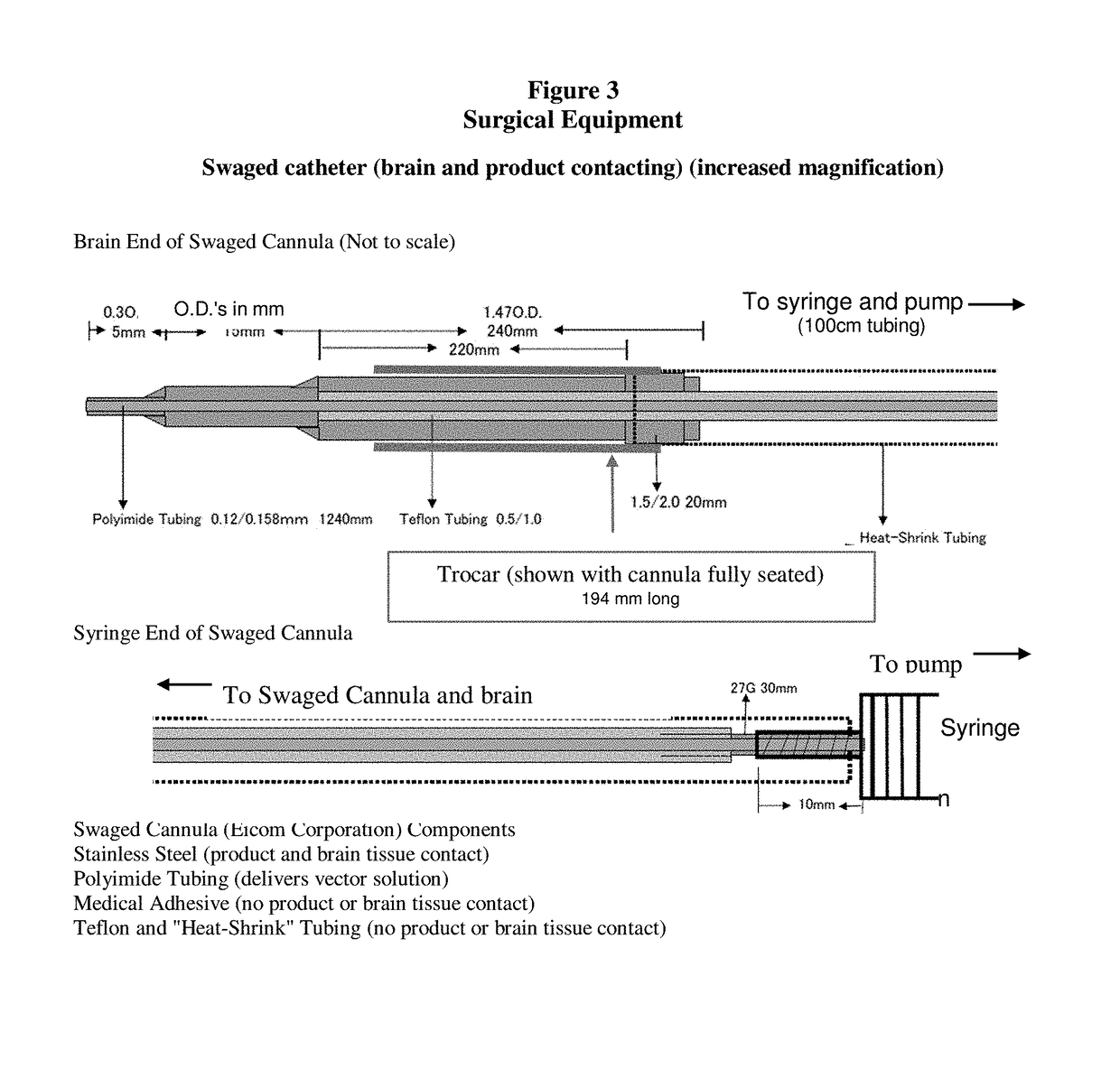Gene therapy for aadc deficiency
a technology of aadc and gene therapy, applied in the direction of lysine, drug composition, genetic material ingredients, etc., can solve the problems of frequent hospitalization, severe developmental failure, global muscular hypotonia and dystonia
- Summary
- Abstract
- Description
- Claims
- Application Information
AI Technical Summary
Benefits of technology
Problems solved by technology
Method used
Image
Examples
example 1
Clinical Study of High Dose AADC Gene Therapy
[0201]Eighteen children (˜2 to ˜9 years of age) with severe AADC deficiency were treated with rAAV2-hAADC vector under two clinical studies authorized by the Taiwan FDA (TFDA). Bilateral injections of rAAV2-hAADC vector into the putamen via an established stereotactic procedure have resulted in remarkable improvements in motor control and achievement of developmental milestones in many of the children.
[0202]A pharmaceutical formulation comprising rAAV2-hAADC vector at a concentration of 5.7×1011 vg / mL is injected directly into the putamen bilaterally via stereotactic procedure using a commercially available NeXframe (Medtronic) skull-mounted platform guided by the Stealthstation® Treon Navigation System (Medtronic), rAAV2-hAADC vector is administered at a dose volume of 80 μL per site to four sites (two per putamen) at a total dose of 1.8×1011 vector genomes (vg) and a total volume of 320 μL.
[0203]Gene therapy was administered using an es...
example 2
A Phase I / II Trial of Gene Therapy for an Inherited Disorder of Monoamine Neurotransmitter Deficiency
[0228]Intraputaminal injection of rAAV2-hAADC vector, in a compassionate use program, resulted in improvements in the motor function of patients with AADC deficiency. A phase VII trial enrolled 10 AADC deficiency patients (1.7 to 8.4 years) with bilateral intraputaminal injection of rAAV2-hAADC vector. All stereotactic surgeries and vector injections were well tolerated. Patients started to move their arms and mouths 2-3 weeks after gene transduction, and new motor skills were observed 2-3 months later. At 12 months after gene transduction, all but one patient had improvements in motor scales, showed increase in cerebral spinal fluid neurotransmitter concentrations, and increase in tracer uptake in FDOPA PET. Anti-AAV2 antibody titers rose in all patients. But titers decreased a few months after gene transduction. There were no signs of cerebral or systemic immune reaction during the...
example 3
[0229]Gene Therapy for Aromatic L-Amino Acid Decarboxylase Deficiency: 5 Years after rAAV2-hAADC Transduction
[0230]Injection of rAAV2-hAADC vector bilaterally (i.e., to both putamens of subjects) with AADC deficiency resulted in improvements in patients' motor function. Data was obtained from 5 patients who have been followed for more than 5 years after treatment. These patients did not have head control and had not achieved other major motor milestones prior to gene transduction, but started to gain new motor skills after gene transduction. Motor development and cognitive function exhibited improvement over this 5-year period, with the most substantial gains observed during the first two years after gene transduction. At 5 years after gene transduction, FDOPA PET still exhibited signals of AADC activity over the putamens. Patients' anti-AAV2 antibody titers rose after gene transduction, peaked a few months later, and then decreased. There were no signs of cerebral or systemic immun...
PUM
| Property | Measurement | Unit |
|---|---|---|
| distance | aaaaa | aaaaa |
| size | aaaaa | aaaaa |
| size | aaaaa | aaaaa |
Abstract
Description
Claims
Application Information
 Login to View More
Login to View More - R&D
- Intellectual Property
- Life Sciences
- Materials
- Tech Scout
- Unparalleled Data Quality
- Higher Quality Content
- 60% Fewer Hallucinations
Browse by: Latest US Patents, China's latest patents, Technical Efficacy Thesaurus, Application Domain, Technology Topic, Popular Technical Reports.
© 2025 PatSnap. All rights reserved.Legal|Privacy policy|Modern Slavery Act Transparency Statement|Sitemap|About US| Contact US: help@patsnap.com



